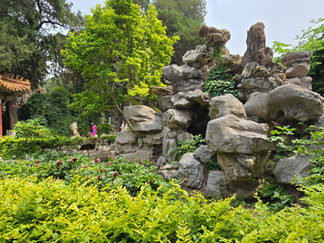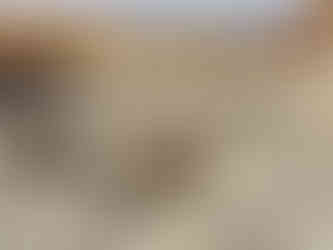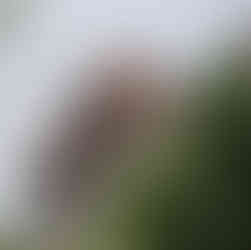Behind the Crimson Walls - Secrets of The Forbidden City
- Shannon
- May 17
- 4 min read
Updated: Jul 31
A Fortress of Silence and Shadows
The enormous Imperial Palace complex, commissioned by the Yongle Emperor of the Ming Dynasty in 1406AD, is the world largest palace and contains the most extensive amount of preserved wooden structures on the planet. Located in the heart of Peking, one of the great ancient capitals of China, the Forbidden City was built to legitimise Yongle's supreme authority after he usurped the throne and to assert the power and grandeur of the new capital Beijing, as a stronghold to threats from the north.

The Gate of Supreme Harmony - Punishment for unauthorised entry to the City was instant death
Listed as a national cultural relic in 1961, construction for this huge palace took more than 14 years to complete and it is believed the total workforce exceeded one million people. The conscripted workforce included engineers, architects, craftsmen, artisans and brute force labour. With nearly 1000 buildings and over 8000 rooms sprawling over 180 acres, it is not only an architectural masterpiece but also a treasury museum, housing 1.8 million pieces of art, including imperial antiquities, paintings, royal jewels and ancient archives. It is a majestic symbol of China's imperial past.
The Emperor was regarded as the "Son of Heaven" and the ultimate ruler of the land. He lived a life of absolute power, surrounded by a complex court system and many advisors, yet remained isolated from the outside world. According to Chinese cosmology, he was the link between heaven & earth and the palace was constructed in alignment with the ancient principles of Feng Shui and the Zeiwei Star, which was believed to be the centre of the heavens and the Emperor's celestial abode in the afterlife.

Over 3000 eunuchs served the Emperor, displaying their “treasured parts” in jars to prove devotion to the Usurper King
The city is divided into two main parts, the Outer Court for ceremonial purposes and the Inner Court, where the Emperor, his family and his concubines had their private living quarters. Many rooms are adorned with intricate decorations including many dragon motifs, which represent imperial authority, and phoenixes, symbolising the Empress. The colour yellow represents the emperor's divine right to rule and red for good fortune and happiness.

Favourite concubines of the Emperor were handed a blood red square of exquisite silk. This signified they were "the chosen ones", picked to demonstrate their eternal fidelity by following Yongle to his grave
Yonlge came to power after a violent military bloodbath, known as the Jingnan Rebellion. At the encouragement of an old soothsayer, he launched a brutal civil war and forcibly overthrew the legitimate heir, his cousin Emperor Jianwen. After 3 years of intense fighting, he emerged victorious and declared himself Emperor in 1402. He purged Jianwen's entire family, his consorts and all high ranking officials loyal to the rightful Emperor and set about erasing him from the history books.
One of Yongle's greatest cultural achievements was the commissioning of the Yongle Encyclopaedia (the Yongle Dadian), an immense project intended to compile all known knowledge of the time into one comprehensive text. The largest of its kind, the encyclopaedia consisted of over 11000 volumes, containing information on all topics from philosophy, medicine, history, astronomy, literature, agriculture and technology. It was a monumental effort to preserve and systemise Chinese knowledge for future generations and took over 2000 scholars 5 years to complete. Sadly less than 4% of it has survived the test of time.
While the centralisation of his power helped strengthen the empire, it also led to despotic and tyrannical rule. He bypassed all traditional checks of power, including the role of ministers & advisors and concentrated all power in his own hands. Despite his early focus on military expansion and stability, his lavish spending was to the detriment of the already struggling peasantry. He demonstrated immense brutality to anyone who could challenge his authority, including family members, leading to widespread discontent.

The Imperial Garden was built by the Emperor as a peaceful place to connect with nature
The last Emperor to reside here was Puyi, though after the 1911 Xinhai Revolution, the imperial system was abolished and his power was largely symbolic, with no political authority. After a failed coup in 1924, Puyi was expelled from the Forbidden City and became a common citizen, marking the end of the Qing Dynasty and over 2000 years of imperial rule. In 1925 the historical complex became the Palace Museum and extensive efforts were undertaken by a now communist China to preserve its rich heritage and monumental historical importance.
Visiting the Forbidden Purple City is like stepping back in time, immersing yourself in a world of lavish ceremonies, intricate rituals, and ancient traditions. For over 500 years, this vast palace complex served not only as the royal residence for 24 emperors of the Ming and Qing Dynasties but also as the political and ceremonial heart of imperial China, where power was wielded and history was shaped.

Auspicious animal statues grace the grounds of the palace, invoking prosperity and good fortune
🗺️ Location
4 Jingshan Front Street, Dongcheng District, Beijing, China
🚆 How to get there
The most convenient way to reach the Forbidden City is by taking subway Line 1 to either Tiananmen West or Tiananmen East stations or Line 2 to Qianmen station. From any of these stops, it’s just a short walk north to the main entrance. Additionally, numerous city buses serve routes that stop near the site, providing easy access from various parts of Beijing. Taxis are also a popular option, offering direct and hassle free transportation right to the main entry gate. Visitors should note that tourists enter the Forbidden City exclusively through the south Meridian Gate, the grand and historic southern entrance to this vast imperial palace complex.
⭐ Attraction Info
The Palace Museum is open from 8:30am to 5pm between April and October and from 8:30am to 4:30pm between November and March. It is closed on Mondays, except for public holidays. Tickets cost ¥60 per person and are released 7 days in advance. They MUST be booked online, as they sell out quickly. To help preserve the site and reduce overcrowding, visitor numbers are limited to 80,000 per day. Audio guides are available in over 40 languages for a rental fee of CNY ¥40, with a CNY ¥100 deposit refundable upon return.
🔗Official Website
紫禁城

Thanks for reading Behind the Crimson Walls - Secrets of The Forbidden City. Check out more awesome destinations here!
Secrets of The Forbidden City are concealed behind the crimson walls, where history and legend intertwine





































